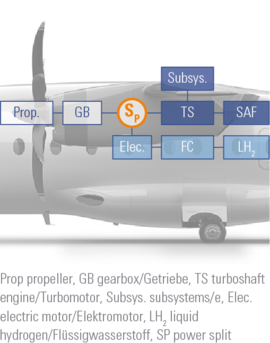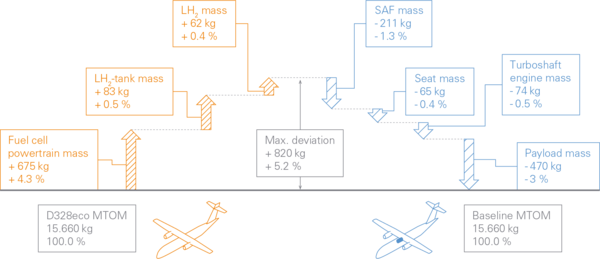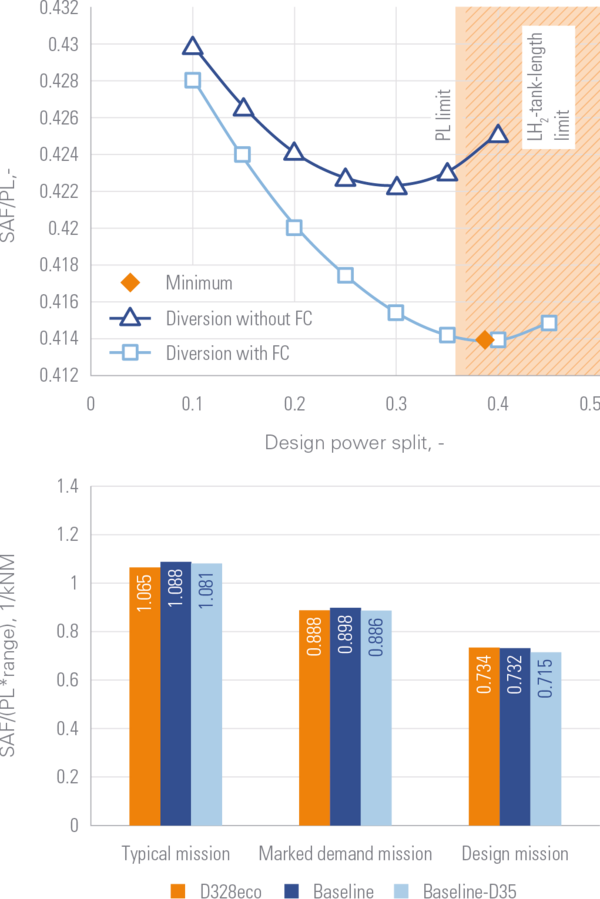This research presents an exploration of a regional aircraft retrofit featuring a parallel-hybrid dual-fuel powertrain specifically tailored to the D328eco aircraft. The integration of hydrogen-powered fuel cells (FC) alongside conventional turboshaft engines burning sustainable aviation fuel (SAF) forms the core of the propulsion system.

The exploration delves into aircraft-level sensitivities and multiple hybridization strategies to assess the interactions, performance improvement potential, and limitations of parameter changes. By enabling FC support during the diversion climb in addition to the design mission segments, the total SAF savings of all investigated designs peaked at 25.4 %. However, this comes at the cost of a 23.4 % payload reduction to be able to incorporate the heavier powertrain (+ 48.7 %) required to realize the corresponding design power split (SP) of 35 %.
Due to the low fuel fraction of the D328eco, it can be stated that SP values of 20 – 40 % form the zone of the greatest benefit. At lower values, the effort of hybridization is in poor proportion to the achievable environmental benefit, while higher values result in an unbalanced cost-efficiency due to the large payload reduction required.
The findings indicate that hybrid retrofits can play a role in reducing the environmental footprint of existing aircraft fleets. This approach not only supports the transition toward a more sustainable aviation but also exploits the reasonable use of existing airframe resources, thereby mitigating the need for new aircraft production and further reducing the overall carbon footprint of the aviation industry.

The underlying project was funded by the Federal Ministry for Economic Affairs and Climate Protection under the funding code 20M2109H.


